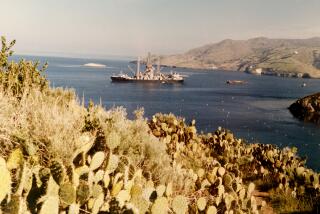Push to End Proliferation of Nuclear Weapons Changes U.S. Spy Game
WASHINGTON — The intensified American effort to stop the proliferation of nuclear weapons is forcing changes in the way the CIA and other U.S. intelligence agencies do business.
CIA Director R. James Woolsey and his immediate predecessor, Robert M. Gates, both put gathering information about weapons proliferation at the top of the U.S. intelligence agenda. There have been hints that this is one of the few areas where American agents may still engage in presidentially approved covert actions against foreign targets.
And chances are that the U.S. intelligence community will be asked to concentrate even more on proliferation problems in the future to meet the Pentagon’s recent requests for more militarily useful information about nuclear sites.
As a result, many CIA and other intelligence officials are doing different things in different ways from what they did in the rituals of the Cold War.
They are keeping track of dilapidated Third World factories, monitoring the movements and traffic patterns of ships on the high seas and trying to intercept faxes and phone calls sent across continents from one luxurious private company to another.
“When the United States and the Soviet Union were directing espionage against one another, it was a very important contest, but it was a contest that was played according to certain rules . . . ,” Woolsey said in December. “Weapons proliferators don’t come to many embassy cocktail parties. One has to work very hard in a lot of different ways.”
Actually, American efforts to collect intelligence about the proliferation of nuclear weapons did not begin with the collapse of the Soviet Union.
During the early 1960s, American intelligence officials succeeded in collecting information about China’s nuclear weapons program before the first successful Chinese test explosion in 1964. American U-2 spy planes, based in Taiwan and making flights over China, took pictures of a plant designed to enrich uranium for nuclear fuel.
The CIA beefed up its efforts after India conducted a nuclear test in 1974. And U.S. intelligence officials were proud of their work in gathering information about Pakistan’s nuclear program.
But the U.S. intelligence effort has not always been so successful. The most notable failure was in Iraq.
“We discovered that Saddam Hussein had a much more extensive nuclear weapons program under way than we knew at the time,” then-Defense Secretary Les Aspin acknowledged in December. “Moreover, we learned later that during the war, we had failed to destroy his biological and chemical war efforts. We don’t want to be caught like that again.”
In 1989, then-CIA Director William H. Webster set up a special new intelligence unit called the Non-Proliferation Center. It was designed to put together a group of specialists from different intelligence agencies to monitor the spread of technology that can be used for weapons of mass destruction.
The Times has reported that in 1991, then-President George Bush signed a secret directive authorizing the CIA to develop plans, including covert action, to block the proliferation of weapons of mass destruction. That directive ordered the CIA and other U.S. intelligence agencies to make proliferation one of their top priorities.
The Non-Proliferation Center includes not only intelligence analysts who digest information but also case officers who are in charge of running spies and mounting intelligence operations. Like other parts of the U.S. intelligence community, the center recently has been forced to deal with budget cutbacks.
Woolsey recently said that the Non-Proliferation Center seeks to “uncover and interdict” attempts by countries seeking weapons of mass destruction to acquire technology, designs, components and military systems.
Some U.S. officials, particularly in the Pentagon, say they believe the center should be improved.
“We’re looking for intelligence that is useful militarily, not just intelligence that’s useful diplomatically,” Aspin said last year.
More to Read
Sign up for Essential California
The most important California stories and recommendations in your inbox every morning.
You may occasionally receive promotional content from the Los Angeles Times.










